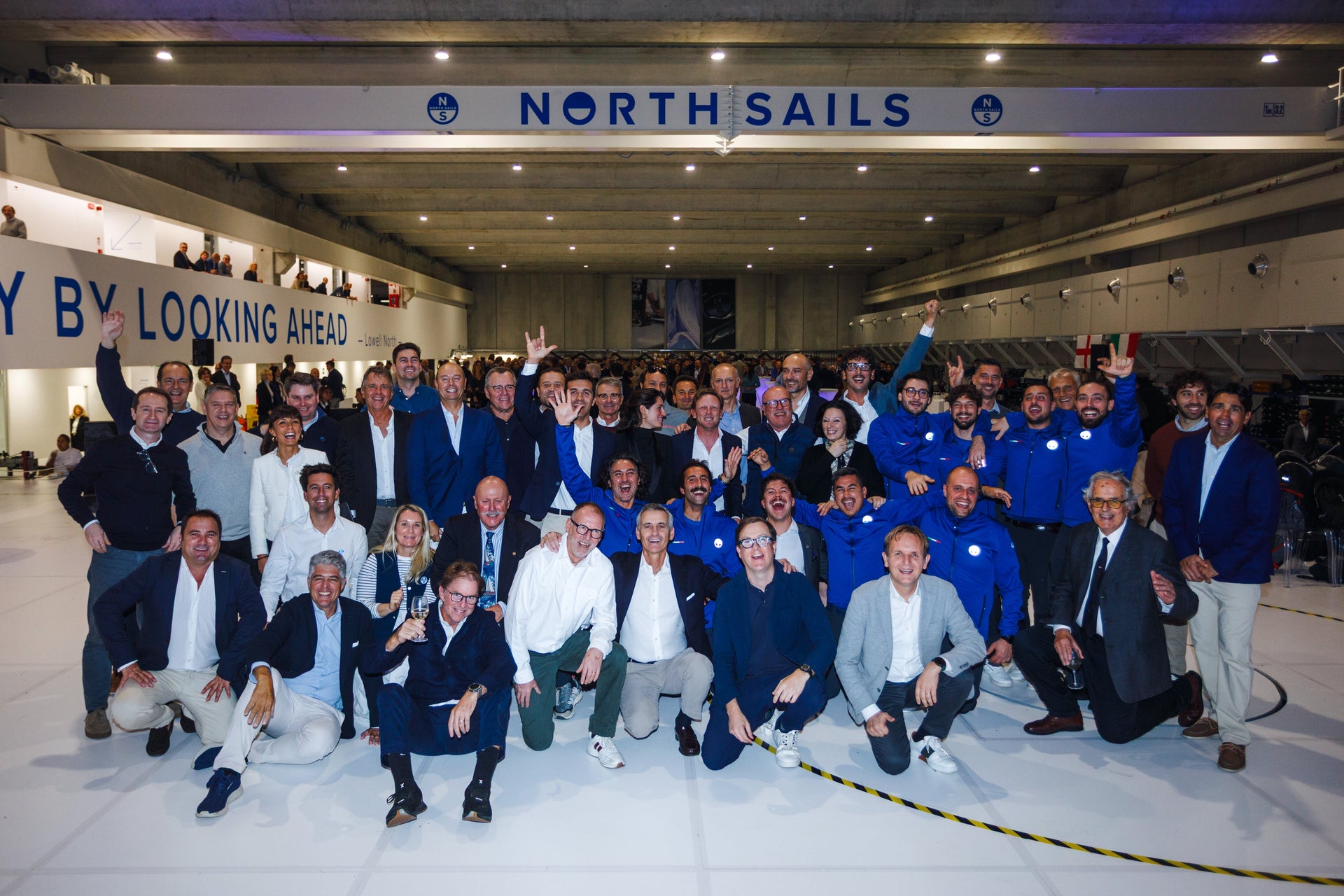SAIL INVENTORY TIPS FOR HYLAS YACHTS
Experts Peter Grimm Jr. and Bob Meagher Share Their Top Tips

© David Walters Yachts
North Sails experts Peter Grimm Jr. and Bob Meagher explored Hylas Yachts' various models and their sail configurations in their webinar, Let's Talk Hylas Yachts. The duo highlighted the different sail combinations for different types of sailing, specifically focusing on cruising inventories. When North Sails expert Peter Grimm Jr. began his journey outfitting Hylas Yachts with sails, the sails were basic Dacron. The boats came with a 135% and an in-mast roller furling mainsail. Over time, and through many iterations, the sails inventories developed to fit the boat rigs properly and fit the head stay sag properly. From the first basic Dacron sails, Peter then shortened the LP on the jib to 130% and moved the clew up. The benefit? Better visibility, less heel, increased boat speed, and less lead sensitivity when reefed. Meanwhile, the mainsails, initially too full, were flattened out to improve their ability to furl and unfurl. For in-boom furlers, Peter believes they’re a great way to go. They give the sail shape of a regular full batten mainsail, reef more easily, and overall provide the ability to point a little higher than an in-mast main. However, the operator needs to be skilled at using it to avoid luff tape or sail damage. Fast forward, and Peter is still working on refining the design, shape, and inventory options for the sails. When it comes to the Hylas 60, he says, "the design philosophy was big main and small jib for easier handling and more power from the main, combined with a self-tacking staysail." This allows double-head rig reaching in lighter winds down to reefed main and staysail in big breeze. The Hylas 57, meanwhile, features two roller furlers on the bow: one with a genoa, the second stay with a roller furling self-tacking jib. The benefit? A larger sail for power, but a smaller easily-tacked jib when sailing short-handed. Meanwhile, the Hylas 48 features an overlapping jib, large self-tacking roller furling staysail, and big in-mast roller furling mainsail with short vertical battens. For all models, you can add a code zero or gennaker thanks to the bowsprit. When it comes to the different types of sail combinations for different types of sailing, Peter and Bob touch upon four key aspects to remember, primarily focusing on cruising inventories.
Need To Have Great Fabric to Have Great Sail Shape
From Dacron to Mylar and beyond, there are lots of options when it comes to sail material. The most crucial aspect to getting a great sail shape is the sail material itself, say Peter and Bob. New Hylas Yachts come with NPL Tour XI standard, a blend of aramid and polyester fiber. It is very robust, great for large boats with high loads, light, and low stretch. For the best longevity and performance, 3Di is recommended. Proprietary to North Sails, 3Di is a molded composite structure with no Mylar that cannot delaminate. It holds its shape better and lasts longer than any sail in the world, making it one of the best values available.
Smaller Headsails
Smaller headsails can make the boats easier to sail and more enjoyable. Why? Because the headsails don’t have to be reefed as early, and the boat isn't heeling over. As the boats developed and people did more bluewater sailing, it became good to have a staysail, excellent for heavy weather sailing and double headsail reaching. Peter likes to think of it as the "get out of jail free card," saying "if everything is going nuts and blowing 40, you could still sail with just the staysail."Temperature Impacts Fabric
The stability of the fabric is essential, stresses Peter Grimm, because certain materials don't do well in the heat. Lesser laminates use heat-sensitive adhesives that degrade with hot/cold cycles over time. North NPL sails use a thermoset adhesive unaffected by heat to stave off delamination. 3Di technology is the best choice for those going to the Caribbean or Mediterranean because it will be stable in cold or warm weather. Why? 3Di is an all-fiber and resin composition that has no Mylar and can't delaminate.
More Options for Downwind Sails
These days you can get more than a simple gennaker for your Hylas Yacht. In the early 2000s, Peter recalls he generally sold mostly gennakers to owners because they were easy to use, and in many cases made the difference between sailing and motoring in 6 or 7 knots of wind speed. Fast forward, and design and fabric technology offers more options for downwind sail options such as cruising Code Zero's on bowsprits. These sails feature a straight luff on a roller furling cable, so they’re flexible while the back of the sail is round like a spinnaker, and lightweight like a spinnaker or gennaker. The sail is easy to control and doesn't require a snuffer to use. You can put it up at the dock or while underway.
The other new option for offwind sailing is the new Helix Gennaker from North Sails, shared by Bob Meagher. This sail features a small luff cable with a structured luff sharing. It allows you to pull the luff tight to sail angles close to a Code Zero, and then ease the halyard off, project the luff to windward, and sail deeper downwind angles -- almost a 2-in-1 sail. To learn more about sail inventory options, Hylas Yachts, or North Sails sail technology, feel free to connect with Peter Grimm Jr. or Bob Meagher. The North Sails Ft. Lauderdale team can help with any project of any size.










